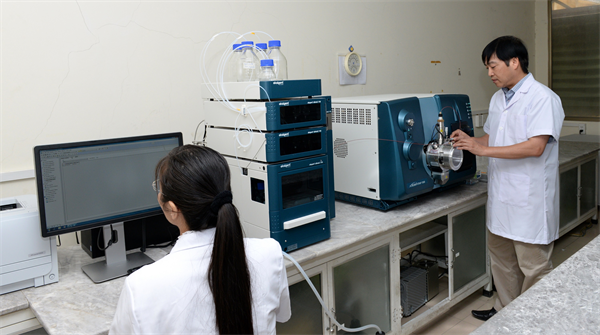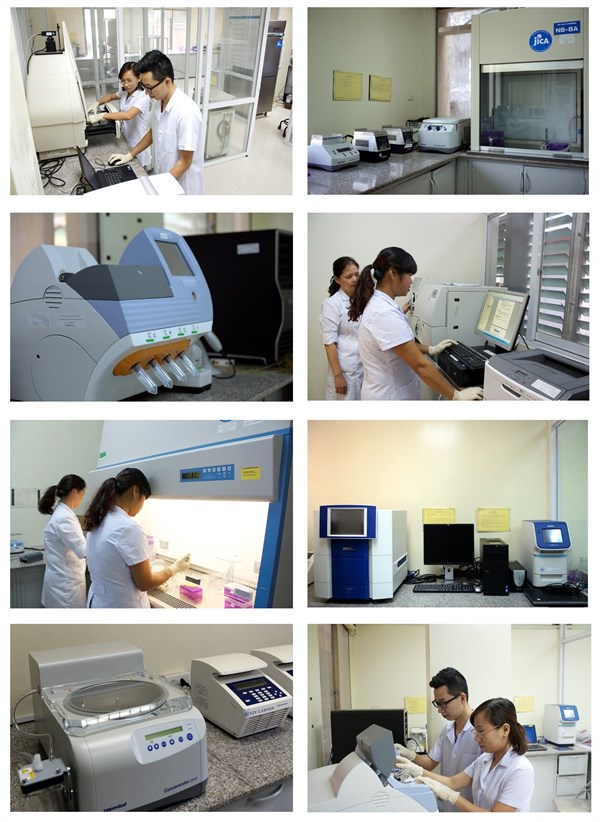The Institute of Nutrition is designated by the Ministry of Health as a food testing facility serving the State management of food safety. The quality management system of the Institute of Nutrition is built and operates in accordance with the standards of ISO/IEC 17025: 2005.
The Institute of Nutrition is designated by the Ministry of Health as a food testing facility serving the State management of food safety. The quality management system of the Institute of Nutrition is built and operates in accordance with the standards of ISO/IEC 17025: 2005.
With modern machinery and equipment systems such as ICP-MS, LCMSMS, GCMSMS, AAS, Real-time PCR, the laboratories of the Institute of Nutrition have more than 30 years of experience in scientific research and food safety, developing new techniques, testing food for inspection, testing food safety, testing services for food, water and animal feed for domestic and foreign organizations and individuals.
With the ability to analyze nearly 300 chemical, physical and microbiological analysis indicators, the Institute's Labs can meet the food testing needs of many customers, ensuring requirements on quality and testing time.
Main target groups:
1. Testing nutritional ingredients in food, water, food additives, animal feed
Macronutrients (protein, lipid, glucid, water, cellulose, cholesterol); Water-soluble vitamins (B1 , B2 , B3 , B5 , B6 , B9 , C) and fat-soluble vitamins (A, D, E, K); Amino acids (8 essential amino acids and 10 important amino acids); Fatty acids (saturated, unsaturated, omega-3, 6, 9, EPA, DHA); Minerals and trace minerals (Na, K, Ca, Mg, Fe, Zn, Se); Phytochemicals, bioactive substances (carotenoids, polyphenols, flavonoids, GABA, ginsenosides, choline, 10-HDA, adenosine, steviosides, chalcones...); Evaluation of food additive quality. Food ingredients: Folic acid, folate in food, Vitamin B12, IgG, IgA, IgE in milk, Lactofferin in milk.
2. Testing for chemical contaminants, natural and toxic substances in food processing
Residual pesticides (organophosphates, organochlorines, pyrethroids, carbamates); Heavy metals (Pb, As, Cd, Hg, Cu, Mn); Mycotoxins (aflatoxins, fumonisin, ochratoxin); Food additives (colorants, preservatives, sweeteners, etc.); Residual antibiotics (b-lactames, tetracyclines, quinolons, etc.); Residual hormones and growth stimulants (salbutamol, clenbuterol, testosterones, etc.); Toxic substances in food processing (PAHs, acrylamide, etc.)


- Total aerobic bacteria
- Coliforms
- E.coli
- S. aureus
- Cl. perfringens
- Enterobacteriacea
- Yeast mold
- Mold
3.2. Microbiological indicators causing food poisoning
- Salmonella
- B. cereus
- Campylobacter spp
- Listeria monocystogenes
- Shigella
- Vibrio cholera
- Vibrio pahaemoliticus
- Pseudomonas aeruginosa
3.3. Probiotic bacteria
- Lactobacillus
- Bacillus subtilis
- Bacillus clausii
3.4. Bacterial and fungal toxicity indicators
- Bacterial toxins: E. coli, Staphylococcus, B. cereus
- Aflatoxin, Ochratoxin, Fumonisins, ...
- Histamine
3.5. Antibiotic-resistant bacteria and antibiotic residues

Some pictures at the Microbiology lab
For more information please contact:
State Inspection Department of Food Safety and Nutrition
National Institute of Nutrition.
Address: 48B Tang Bat Ho, Hai Ba Trung district, Pham Dinh Ho ward, Hanoi city
Phone: 024 39714 826
Email: kiemtranhanuoc.ninvn@gmail.com
We always commit to:
1. Ensure honest, accurate, and objective analysis results based on standardized methods, ensuring quick testing time as agreed with the customer.
2. Willing to cooperate with domestic and foreign agencies and units in the field of research and testing of food quality and safety.
3. Continuously improve the capacity of staff to meet the requirements of regional and international integration in the field of food safety and hygiene testing.
4. Willing to participate in technical training for the food safety testing system at the provincial level and other long-term and short-term training when needed.

